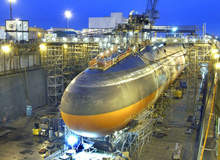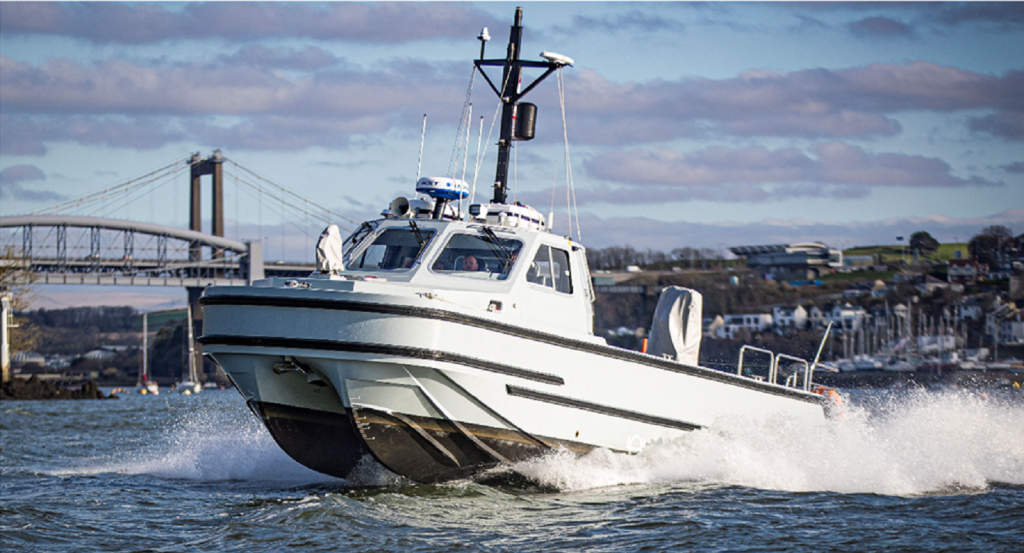
The submarine was the first stealth combat platform, and remains the most enduring, even though its full military potential was poorly appreciated in the early days of its development. In 1914, despite the sinking of three British cruisers in almost the same number of minutes, naval thinking held that this new underwater threat would be short-lived, as countermeasures improved. With the development of sonar four years later, that prophecy appeared to be coming true, leading the US Naval Institute to conclude in its Proceedings of August 1925 that the submarine would ultimately prove too vulnerable to be used in conflict.
History, of course, tells a different story, and the cat-and-mouse game between subsea and surface combatants that began with the U-boats and continued through the Cold War era, remains to the present day. It is an uneasy arms race which has periodically seen one or the other gain temporary advantage, but which neither side has, at least as yet, seemed able to win decisively – and the innovations in both stealth and detection technologies keep on coming.
A changing battle-space
Many of these developments have been driven by a shift in the expected battle-space. With the end of the Soviet threat, the concept of open-sea conflict between large fleets has largely faded from the West’s strategic planning, to be replaced by the expectation that future naval operations will be in littoral waters, and principally against asymmetric threats.
This new scenario is an undeniably challenging one for anti-submarine warfare (ASW), since shallow coastal seas provide natural underwater concealment. Moreover, as the US Naval Doctrine Command’s ‘Littoral Anti-Submarine Warfare Concept’ document explains, detection is further hampered by the global trend towards smaller, but more lethal fleets; in effect, fewer needles are scattered through a much less easily sifted haystack.
There is, as Captain John Morgan of the US Navy put it, a very real need for “enhanced capabilities to root modern diesel, air-independent, and nuclear submarines out of the ‘mud’ of noisy, contact-dense environments typical of the littoral, and be ready as well to detect, localise, and engage submarines in deep water and Arctic environments.”
Bolstering detection capabilities
Achieving better detection principally rests on improving sonar and other sensor systems to provide greater accuracy and wider coverage areas, issues which, for example, the AN/SQR-20 multifunction towed array (MFTA) – the first new surface ship sonar array built for the US Navy in a quarter of a century – has already begun to address.
An active and passive sonar system, it is intended for use in a variety of roles and aboard a number of different classes of vessels, specifically including those ear-marked for future littoral combat roles. The system was also developed for use with a remote multi-mission vehicle (RMMV) snorkelling unmanned surface vehicle (USV) and although it was ultimately decided not to take this further in terms of ASW, it does give a strong hint that this may be an avenue for the future.
Such deployment of unmanned platforms has obvious benefits in extending the mobility and range of anti-submarine detection, with multiple sets of small arrays enabling a warship to effectively control a significantly larger area, either offensively or defensively, as required. As USV and unmanned underwater vehicle (UUV) technologies mature, adding submarine hunting to their established counter-mine role forms the logical next step in dealing with an elusive foe who currently holds the advantage.
Looking still further ahead, research at Southampton University has begun to challenge the relative security submarines currently enjoy in littoral waters, with the development of a system known as TWIPS – twin inverted pulse sonar – and based on the natural sonar of dolphins. Scientists there have shown that a dual stream of underwater pulses can penetrate bubbles more effectively than conventional sonar and provide a significantly better detection rate – at least under laboratory conditions. Although the work is still in its infancy, it could herald the end of easy invisibility for submarines amid turbulent coastal seas.
Eluding detection
However, as fast as such new detection solutions are developed to give the fleeting edge to ASW, inevitably, opposing innovations evolve to help submariners elude them.
Acoustic signatures have, for instance, already been cut to unprecedented low levels with the likes of the US Virginia class attack submarines, which employ a novel propulsor design, isolated deck structures and an innovative anechoic hull coating – but even so, they can still be heard. Future generations of submarines, are gearing up to be quieter still, particularly if the direction taken by Howaldtswerke-Deutsche Werft (part of ThyssenKrupp Marine Systems) with its revolutionary Class 212A, becomes mainstream.
Powered by hydrogen fuel cells, these vessels offer non-nuclear, air-independent operation, are almost completely silent and radiate virtually no heat. This, coupled with high-tech energy management, acoustically optimised equipment and non-magnetic construction, is claimed to make these submarines “nearly impossible to detect.”
Nano-tech cloaking devices
The Holy Grail of submarine stealth, however, remains a ‘cloaking device’ that would render submerged vessels invisible to sonar and, although the research is still in its early stages, it seems that nanotechnology may hold the key to turning this science-fiction staple into reality.
Naval researchers have long been interested in the ability of micro-particle nano-coatings to help minimise bio-fouling and its associated drag and turbulence, but recent work has begun to demonstrate a major potential acoustic benefit too. The idea, in the words of Nicholas Fang, professor of mechanical science and engineering at the University of Illinois, “is not about dampening noise, but to guide sound waves around structures. If we have a coating on a submarine that bends acoustic waves before they hit the surface, guiding them around the submarine smoothly, then you won’t be able to detect a submarine using sonar.”
His team have already successfully managed to demonstrate a functional acoustic cloak capable of hiding a submerged steel cylinder from a sonar sensor array in the laboratory. While doing the same for something the size of a Seawolf nuclear submarine may still be some years off, the implications are clear – and there may be more benefits to come. Researchers at the University of Texas are harnessing energised carbon nano-tubes to generate ultra-low frequency sound, offering the long term promise of a thin coating for subs that could provide noise-cancelling against incoming enemy pings, while additionally helping enhance the submarine’s own sonar system.
Holding the upper hand
The changing nature of the game means that getting the upper hand is hard – and holding on to it, even harder. For the moment at least, as the sinking of the ROKS Cheonan most recently demonstrated, the advantage lies underwater, but with the wake-up call sounded and the world’s navies readdressing their ASW doctrines, that may be a short-lived thing. Developments in unmanned platforms and littoral sonar may shortly make detection easier, but all of that could, in turn, amount to nothing if acoustic cloaking becomes a viable reality – and so it goes on. It is a ceaseless round of measure and counter-measure, but in the end, even if it is a contest that no side can conclusively win, it is one which neither can afford to lose.







